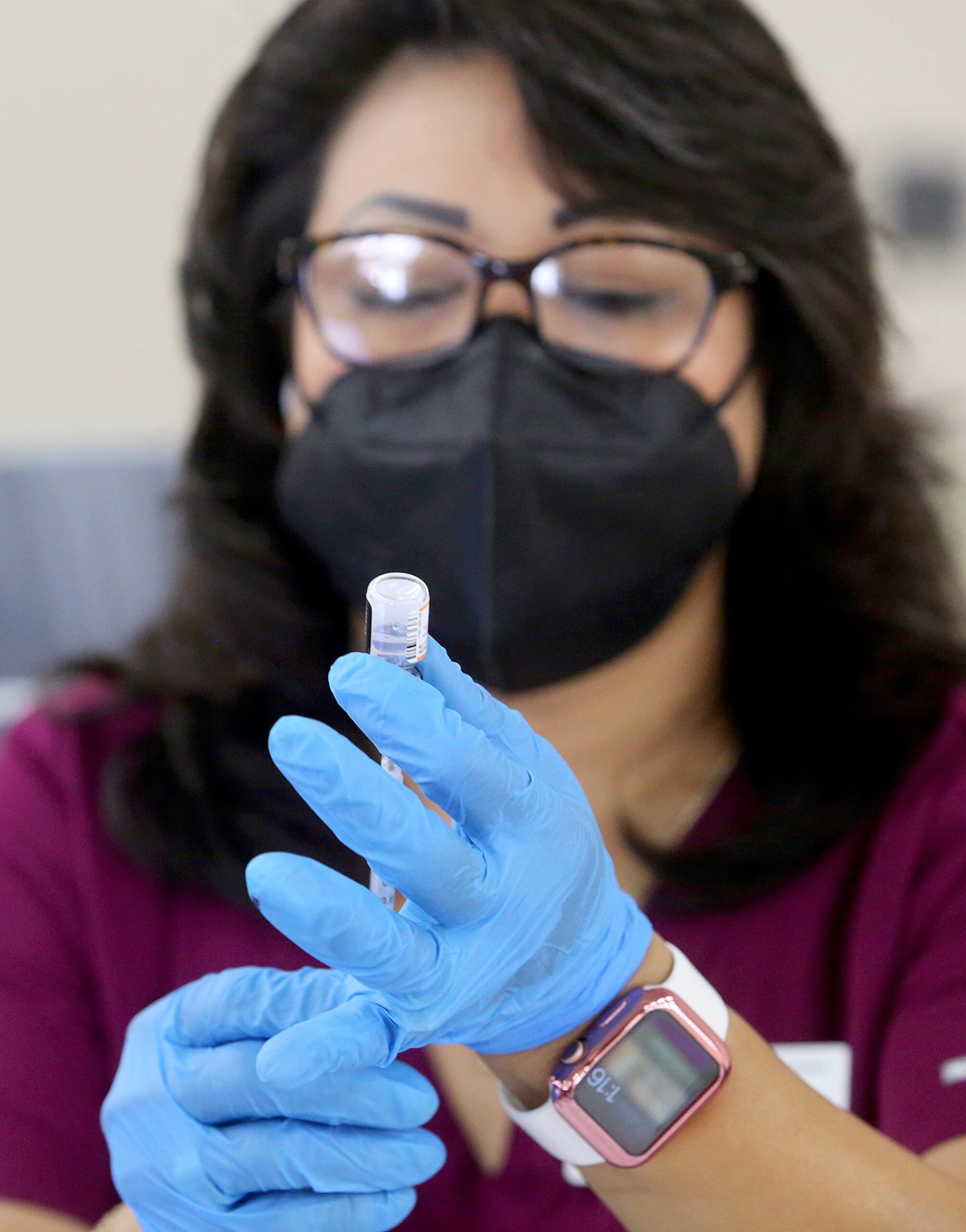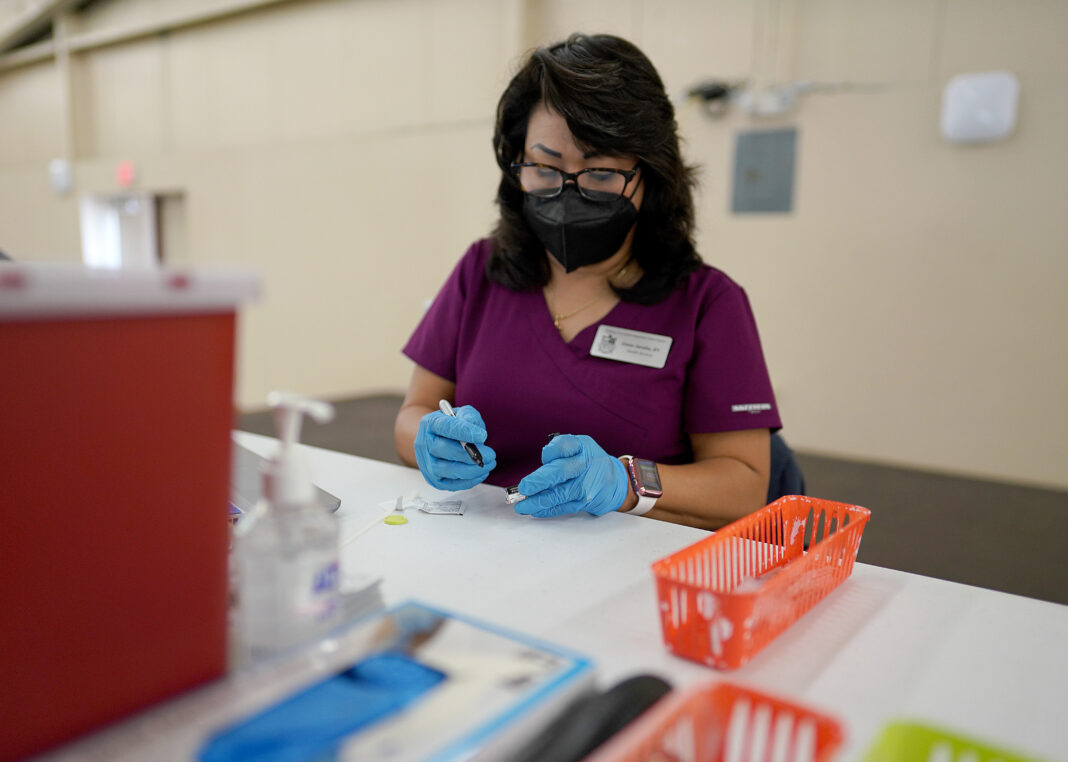Hidalgo County reported more than 23,000 back-logged cases of COVID-19 this week and expects to report more in the coming weeks, highlighting that more than any other time during the pandemic, it’s unclear just how far the virus has spread.
With the ever-increasing number of COVID-19 cases and the complications that come with reporting them, health officials acknowledge that no one really knows how many cases there actually are locally, statewide, or nationwide.
“It is very difficult to get an accurate count on positivity, very difficult to get that,” said Eddie Olivarez, the chief administrative officer of the Hidalgo County Health and Human Services Department.
More than 120 different vendors in the county administer COVID-19 tests and they each have to report their own data to the state, which Olivarez said is one of the factors that complicates their ability to keep up with the number of cases.
Those 120 vendors don’t even include big-box stores like CVS, Walmart and Walgreens.
From their own testing and testing done by all those vendors, they received well over 40,000 tests for the month of January, which they’re still reviewing.
Olivarez said they reviewed a first batch of 33,000 tests from which they found about 9,000 duplicates. The remaining 23,000-plus were reported to the public this week.
But checking for duplicates or errors is a painstaking process, and then logging just one case can take between 20 and 30 minutes, according to Olivarez.
“When you’re dealing with 40,000 of them and sorting them out, it takes time,” he said.
But the biggest factor that makes it nearly impossible to know how many cases of COVID there really are is the availability of at-home tests.
Last month, the federal government began offering free at-home testing kits and individuals can also obtain them from stores and online.
The reason those tests complicate the recording of COVID-19 cases is because the county, the state and the Centers for Disease Control and Prevention do not require that individuals report their results from those tests.
“Now the state’s not up to date either, the state’s very behind on their numbers too,” Olivarez said of the number of cases logged by the Texas Department of State Health Services, or DSHS. “If you go to the state dashboard and you look at how many cases, it actually gives you a date and the date could be several weeks, several months old.”
Dr. Emilie Prot, regional medical director for DSHS Public Health Region 11, also acknowledged the inability to keep an accurate count of cases.
“It is difficult for the public to comprehend but we don’t know the exact number of cases,” Prot said during a news conference Jan. 20.
Among the reasons for it is issues with reporting, but also the several avenues available for reporting cases such as an electronic report between a lab and the state, individuals reporting their results via fax and individuals calling in to report their results.
“Although Hidalgo has been behind on entering cases, it is not unusual to not have the exact number,” she said. “Epidemiology isn’t exact science, it helps us understand trends, it helps us figure out what we need to do by looking at and studying those trends to figure out who’s most at risk.”

The recorded case, though incomplete, can still be used as a guide so that when there’s high transmission throughout the U.S., officials and individuals make decisions about their safety.
“It’s not an exact science so it’s not worrisome in my opinion,” Prot said. “We are seeing the increase and we do know that there’s a lot of transmission.”
Health officials seem to agree that the high transmission is mainly driven by the omicron variant.
However, Olivarez pointed out that while the county had seen an increase in COVID-19 hospitalizations — more than 38% of the occupied beds in hospitals were filled with COVID patients as of Friday — the ratio of cases to hospitalizations is lower now with omicron than it was with the delta variant.
“The ratio of positive to hospitalization is not as high,” Olivarez said. “However, the numbers of omicron is what makes the change.”
As of Friday afternoon, Olivarez reported there were 416 people in the hospital including 380 adults and 36 pediatric patients.
Of those, 99 adults and eight pediatric patients were in intensive care units.
The majority of the individuals hospitalized due to COVID, Olivarez said, were not fully vaccinated. He noted that there was a small percentage of fully vaccinated people who had died due to COVID-related complications but those individuals, he said, were dealing with other conditions such as cancer or advanced diabetes.
“Their medical problem was the cause of death and COVID was an additional issue,” Olivarez said. “So COVID was not the primary cause of death, their primary cause of death was their severe medical complication that was complicated with COVID.”
As the number of COVID cases continue to climb to unknown levels, Olivarez said the reality was that COVID was nearly becoming endemic, meaning it would be commonplace.
“I’m not a physician, but I see that COVID, after two years and thousands and thousands of cases, thousands of deaths, is pretty much here, it’s not a passing thing anymore,” Olivarez said. “This is here to stay and I actually feel that there may be in the future an annual COVID vaccine just like the flu.”
For those who haven’t yet gotten vaccinated, Olivarez urged them to do so, referring to vaccines as the best protection against developing severe COVID symptoms.
He also encouraged individuals who test positive to self-isolate and follow safety protocols set by the CDC such as avoiding large crowds, social distancing, washing hands, and using masks.
“It’s all collectively a tool, the vaccine being the most strongest of the tools,” he said. “So when you add in vaccine, natural immunity, hygiene, masks, social distancing and keeping track of all of that, we will get through this pandemic but it’s going to take time.”





